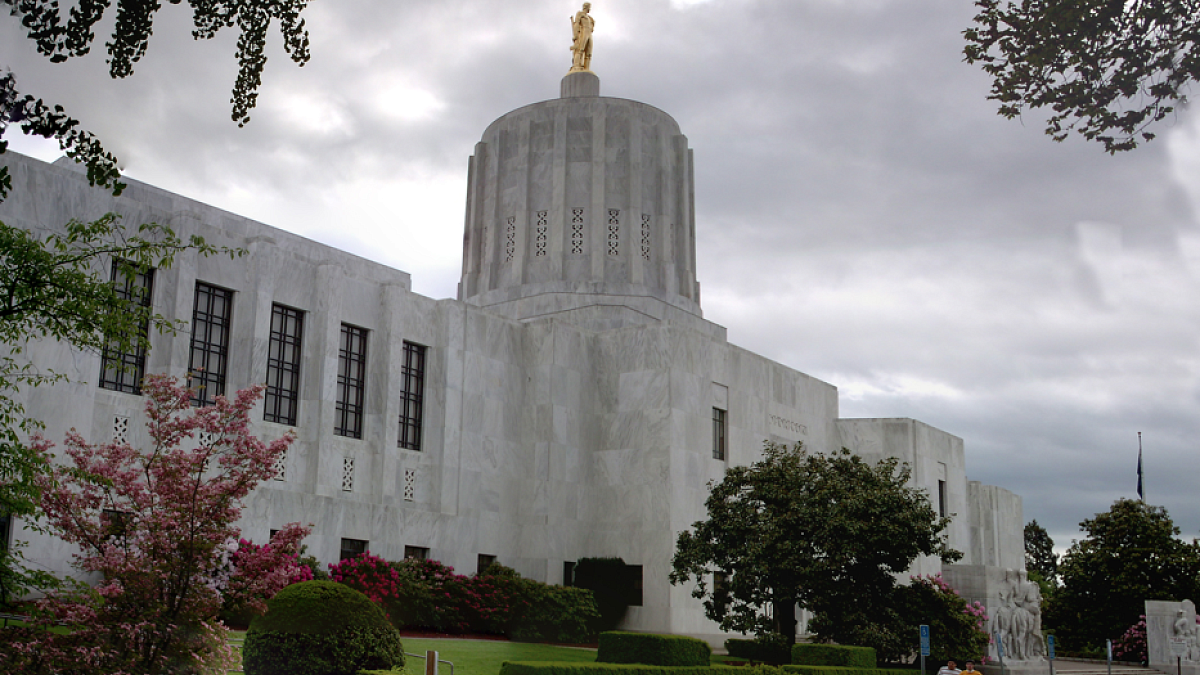A bill making its way through the Oregon Legislature would help more cities take part in the UO’s Sustainable City Year Program by creating a new state matching fund.
House Bill 2594 would put $300,000 in the fund to help cities, particularly smaller communities in rural areas of the state, that otherwise wouldn’t be able to participate in the sustainability program. Sustainable City Year pairs cities with students and faculty members in the College of Design, College of Business, School of Journalism and Communication, School of Law, and the College of Arts and Sciences for a large-scale, intensive, year-long partnership to tangibly move forward on paths toward a more sustainable future.
“Many Oregon communities, especially those in rural areas, could benefit from a partnership with SCYP but cannot fully afford to participate,” said Marc Schlossberg, professor of city and regional planning and co-director of the Sustainable Cities Institute. “SCYP partners must meet several standards, including buy-in from local political leadership and staff, interest in a range of community improvement issues, and having financial skin in the game.”
The House Education Committee held its first public hearing on the bill Feb. 25. Committee members will now decide whether to hold a work session on the bill before sending it to the Joint Committee on Ways and Means, which reviews all budget requests.
The bill is sponsored by state Reps. Julie Fahey, a Eugene Democrat, and Marty Wilde, a Democrat representing portions of Lane and Douglas counties.
The Sustainable City Year Program “directly connects students and cities, allowing students to learn and cities to improve,” Wilde said during the public hearing. “Students study the city and find ways it can improve in terms of sustainability. Cities benefit from the added capacity and new perspective. Students benefit from the real-world experience they can apply beyond college.”
Each year, the program works in a different community and matches community-identified project ideas with up to 35 university courses, more than 20 faculty members and 500 students across more than 12 disciplines giving 40,000 hours of effort. Developed in 2009, the model has been adopted by more than 25 other universities across the United States and is being disseminated globally with the help of the United Nations.
To date, the Sustainable City Year Program has worked with the cities of Gresham, Salem, Springfield, Medford, Redmond and Albany. Last year it piloted two new expansions of its model, including partnering with Portland transit agency TriMet on its proposed 12-mile Southwest Corridor light rail project and with a smaller Oregon city, La Pine.
“We were very impressed by the both the quantity and quality of the work produced,” said Albany Mayor Sharon Konopa. “Student recommendations have subsequently been incorporated into plans for our parks system and the Albany waterfront, the parks and recreation department’s business practices, community engagement objectives and other city activities. By increasing our capacity and bringing in fresh ideas, student efforts helped save the city money and make more informed decisions about some of Albany’s significant challenges.”


